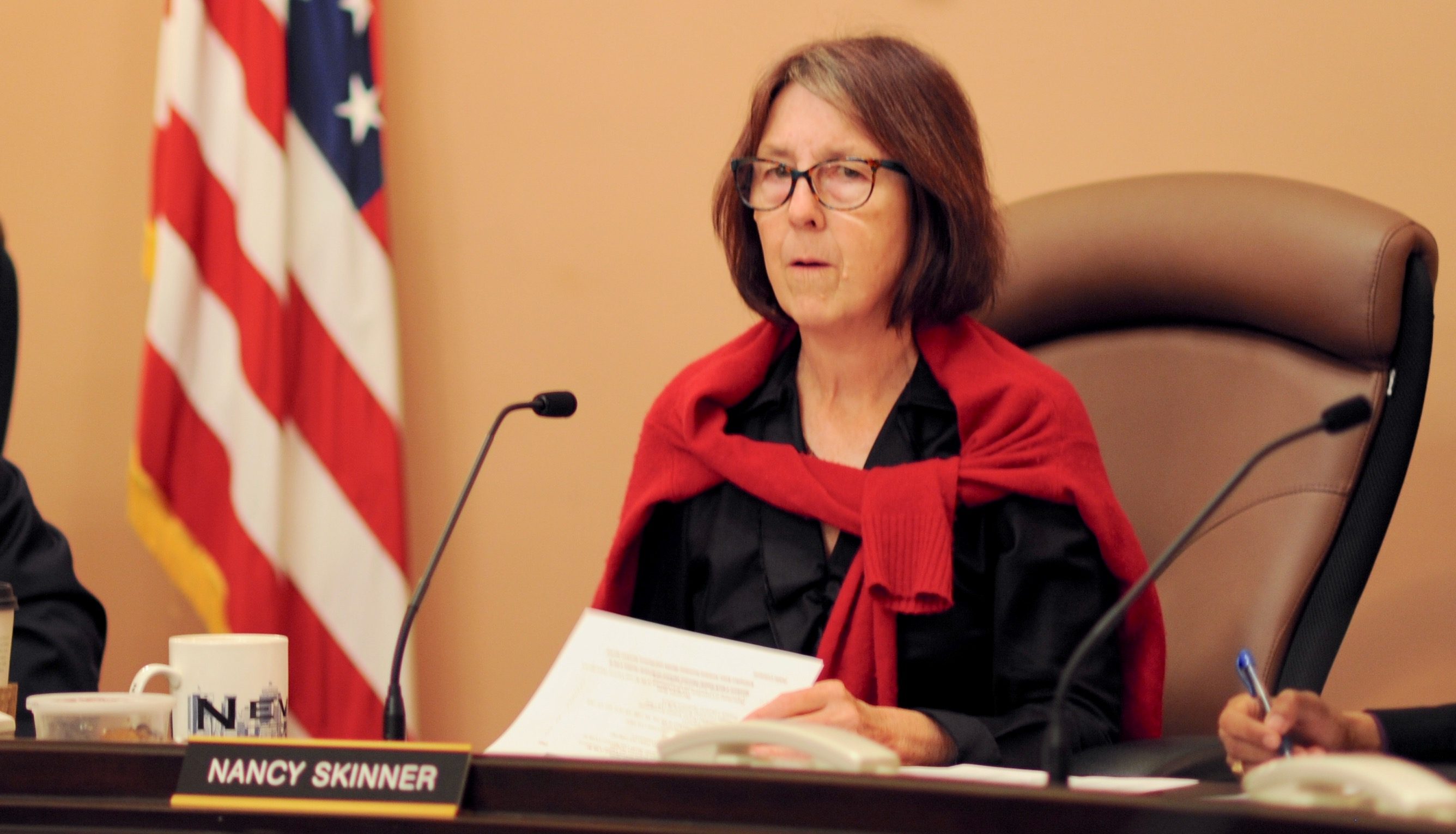
Senator Toni G. Atkins. (Photo: Kevin Sanders for California Globe)
Housing Development Zoning Under SB 9
This bill could lead to up to four homes on lots where currently only one exists to alleviate housing shortage
By Chris Micheli, September 17, 2021 2:45 pm
On September 16, 2021, Governor Gavin Newsom signed into law Senate Bill 9 by Sen. Toni Atkins (D-San Diego), which would extend the Housing Crisis Act of 2019. It is Chapter 162.
Section One of the bill adds Section 65852.21 to the Government Code to specify that a proposed housing development containing no more than two residential units within a single-family residential zone is considered ministerially, without discretionary review or a hearing, if the proposed housing development meets all of the following requirements:
- The parcel subject to the proposed housing development is located within a city, the boundaries of which include some portion of either an urbanized area or urban cluster, as designated by the United States Census Bureau, or, for unincorporated areas, a legal parcel wholly within the boundaries of an urbanized area or urban cluster, as designated by the United States Census Bureau.
- The parcel satisfies certain requirements specified in existing law.
- The proposed housing development would not require demolition or alteration of housing that is subject to a recorded covenant, ordinance, or law that restricts rents to levels affordable to persons and families of moderate, low, or very low income; housing that is subject to any form of rent or price control through a public entity’s valid exercise of its police power; or housing that has been occupied by a tenant in the last three years.
- The parcel subject to the proposed housing development is not a parcel on which an owner of residential real property has exercised the owner’s rights to withdraw accommodations from rent or lease within 15 years before the date that the development proponent submits an application.
- The proposed housing development does not allow the demolition of more than 25 percent of the existing exterior structural walls, unless a local ordinance so allows or the site has not been occupied by a tenant in the last three years.
- The development is not located within a historic district or property included on the State Historic Resources Inventory, or within a site that is designated or listed as a city or county landmark or historic property or district pursuant to a city or county ordinance.
In addition, a local agency may impose objective zoning standards, objective subdivision standards, and objective design review standards that do not conflict with this section. However, the local agency is prohibited from imposing objective zoning standards, objective subdivision standards, and objective design standards that would have the effect of physically precluding the construction of up to two units or that would physically preclude either of the two units from being at least 800 square feet in floor area.
Moreover, no setback can be required for an existing structure or a structure constructed in the same location and to the same dimensions as an existing structure. However, a local agency may require a setback of up to four feet from the side and rear lot lines.
A local agency may require certain conditions when considering an application for two residential units, such as off-street parking of up to one space per unit or a percolation test for units connected to an onsite wastewater treatment system. Moreover, a local agency may deny a proposed housing development project if the building official makes a written finding, based upon a preponderance of the evidence, that the proposed housing development project would have a specific, adverse impact upon public health and safety or the physical environment and for which there is no feasible method to satisfactorily mitigate or avoid the specific, adverse impact. A local agency is required to ensure that a rental of any unit created pursuant to this section be for a term longer than 30 days.
Section Two of the bill adds Section 66411.7 to the Government Code to require a local agency to ministerially approve, as set forth in this section, a parcel map for an urban lot split only if the local agency determines that the parcel map for the urban lot split meets all the following requirements:
- The parcel map subdivides an existing parcel to create no more than two new parcels of approximately equal lot area provided that one parcel is not be smaller than 40 percent of the lot area of the original parcel proposed for subdivision.
- Both newly created parcels are no smaller than 1,200 square feet; however, a local agency may by ordinance adopt a smaller minimum lot size subject to ministerial approval under this subdivision.
- The parcel being subdivided meets all the following requirements:
- The parcel is located within a single-family residential zone.
- The parcel subject to the proposed urban lot split is located within a city, the boundaries of which include some portion of either an urbanized area or urban cluster, as designated by the United States Census Bureau, or, for unincorporated areas, a legal parcel wholly within the boundaries of an urbanized area or urban cluster, as designated by the United States Census Bureau.
- The parcel satisfies the specified requirements of existing law.
- The proposed urban lot split would not require demolition or alteration of any of the following types of housing:
- Housing that is subject to a recorded covenant, ordinance, or law that restricts rents to levels affordable to persons and families of moderate, low, or very low income.
- Housing that is subject to any form of rent or price control through a public entity’s valid exercise of its police power.
- A parcel or parcels on which an owner of residential real property has exercised the owner’s rights to withdraw accommodations from rent or lease within 15 years before the date that the development proponent submits an application.
- Housing that has been occupied by a tenant in the last three years.
- The parcel is not located within a historic district or property included on the State Historic Resources Inventory, or within a site that is designated or listed as a city or county landmark or historic property or district pursuant to a city or county ordinance.
- The parcel has not been established through prior exercise of an urban lot split as provided for in this section.
- Neither the owner of the parcel being subdivided nor any person acting in concert with the owner has previously subdivided an adjacent parcel using an urban lot split as provided for in this section.
In addition, an application for a parcel map for an urban lot split must be approved in accordance with specified requirements including:
- A local agency must approve or deny an application for a parcel map for an urban lot split ministerially without discretionary review.
- A local agency must approve an urban lot split only if it conforms to all applicable objective requirements of the Subdivision Map Act.
- A local agency cannot impose regulations that require dedications of rights-of-way or the construction of offsite improvements for the parcels being created as a condition of issuing a parcel map for an urban lot split pursuant to this section.
Nonetheless, a local agency may impose objective zoning standards, objective subdivision standards, and objective design review standards applicable to a parcel created by an urban lot split that do not conflict with this section. However, a local agency cannot impose standards that would have the effect of physically precluding the construction of two units on either of the resulting parcels or that would result in a unit size of less than 800 square feet.
In addition, not setback can be required for an existing structure or a structure constructed in the same location and to the same dimensions as an existing structure. In specified instances, however, a local agency may require a setback of up to four feet from the side and rear lot lines.
A local agency may deny an urban lot split if the building official makes a written finding, based upon a preponderance of the evidence, that the proposed housing development project would have a specific, adverse impact upon public health and safety or the physical environment and for which there is no feasible method to satisfactorily mitigate or avoid the specific, adverse impact.
In addition to any conditions established in accordance with this section, a local agency may require any of the following conditions when considering an application for a parcel map for an urban lot split:
- Easements required for the provision of public services and facilities.
- A requirement that the parcels have access to, provide access to, or adjoin the public right-of-way.
- Off-street parking of up to one space per unit, except that a local agency cannot impose parking requirements in specified instances.
A local agency must require that the uses allowed on a lot created by this section be limited to residential uses. A local agency must also require an applicant for an urban lot split to sign an affidavit stating that the applicant intends to occupy one of the housing units as their principal residence for a minimum of three years from the date of the approval of the urban lot split.
These provisions do not apply to an applicant that is a “community land trust,” or a “qualified nonprofit corporation.” A local agency is prohibited from imposing additional owner occupancy standards, other than provided for in this subdivision, on an urban lot split. A local agency must require that a rental of any unit created pursuant to this section be for a term longer than 30 days. A local agency is prohibited from requiring, as a condition for ministerial approval of a parcel map application for the creation of an urban lot split, the correction of nonconforming zoning conditions.
Nonetheless, a local agency cannot be required to permit more than two units on a parcel created through the exercise of the authority contained within this section. This section also defines the terms “unit,” “objective zoning standards,” “objective subdivision standards,” “objective design review standards,” and “local agency.”
Section Three of the bill amends Section 66452.6 of the Government Code to double to 24 months the amount of an additional period of time by a local ordinance for an approved or conditionally approved tentative map’s expiration after its approval.
Section Four of the bill make a legislative finding and declaration that ensuring access to affordable housing is a matter of statewide concern and not a municipal affair therefore provisions of this act apply to all cities, including charter cities.
- Second Quiz on Where Areas of Law Are Found in the California Codes - December 21, 2025
- Bonds and Undertakings in California - December 21, 2025
- Pleadings in Eminent Domain Cases - December 20, 2025





^^^ SIR SPAMALOT !!!!
Simple…..upzone residential to commercial with aggressive parking ,fire and safety, height requirements, lots of those onerous greenie goodies making development improbable.
Excellent way to continue the exodus from California. High density housing to improve congestion and crime at the same tying the hands of police… Go check out New York City and see the results of high density housing Mr Newsom.
Housing crisis is not due to zoning laws. I don’t want a multi-storie apartment building next to my house. Fixing the housing crisis requires CA to stop being a sanctuary state, receiving illegal aliens with open arms and giving them government benefits, to name a few things. The 60k homeless on the streets are not there because of housing shortage. They are drug/alcohol abusers, mentally ill, and unhirable. No amount of housing is going to get them off the streets. Local cities NEED TO FIGHT AGAINST SB9 NOW!!!!!!!!!!!!!!!!!!!!!!!
Thank you!
This does nothing to help the so called housing crisis. It destroys the single-family atmosphere, which is why most people move out to the Inland Empire and other suburban areas of the State. We do not want to live like rats in tiny units.
Multi-unit low income housing needs to be built next to Democrat Sen. Toni Atkins’ mansion in San Diego and next to all Democrat’s homes in California?